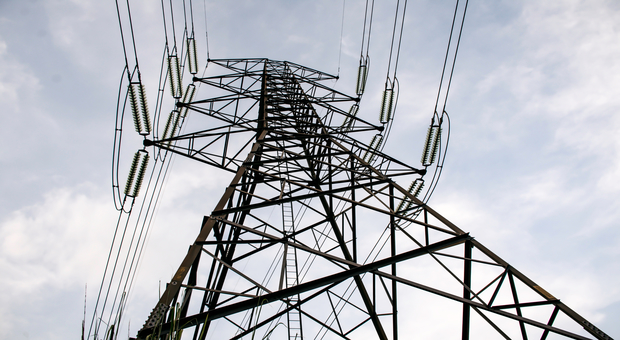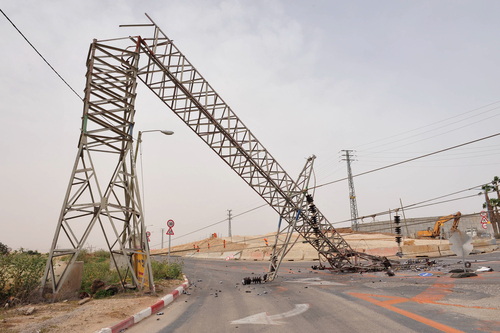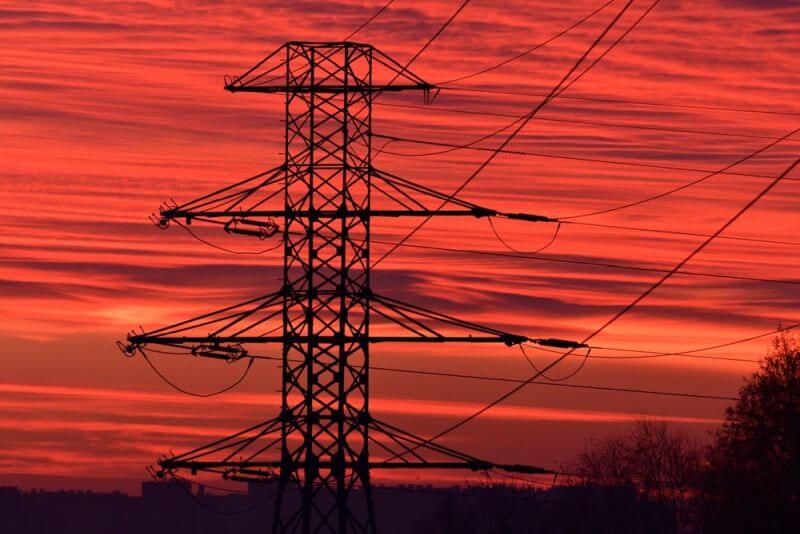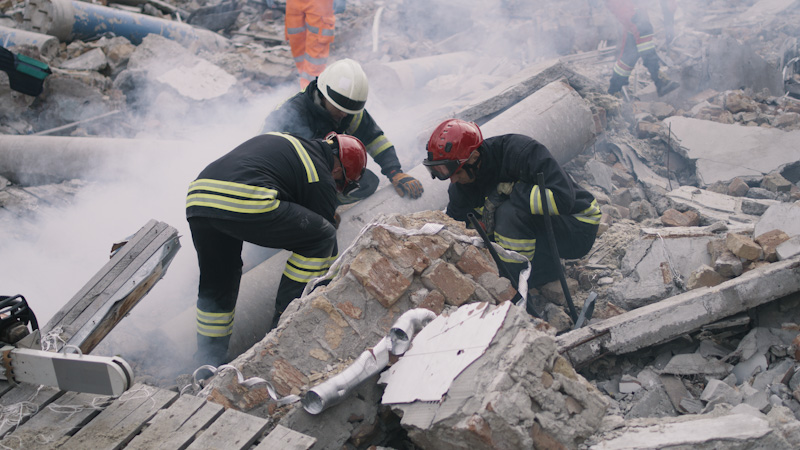In 1882, Thomas Edison built the very first electric grid in Manhattan, New York City.
This tiny grid provided electrical power to a whopping 85 customers, who owned a total of 400 electric lamps. In the ensuing 130 plus years, the power grid has grown to a behemoth which would cost almost five trillion dollars to replace.
Yet much of this system is aging, in a time when it has been becoming increasingly more difficult to make replacements and repairs, primarily due to government regulations and red tape. While some of the more restrictive regulations have been rolled back in recent times, the impact of Obama-era regulations has caused some major shifts in our country’s energy production, especially moving away from coal and nuclear power.
Parts of the electric grid predate the 1900s, especially in the Northeast. But even more recent additions are aging. The majority of our nation’s transmission and distribution lines were built in the 1950s and 60s, considerably younger than those parts constructed in the latter 1800s, but already well past their 50 year life expectancy.
Click here to find out how to survive when the lights go out!
Today, the transmission and distribution network is operating at its peak limit, with some parts operating past that point. The nation’s need for electrical power increases every year, but the grid does not. It is not enough to build more power plants, if the distribution network can’t handle the load.
The transmission network isn’t the only part of our electrical grid that is aging. The average age of coal-fired power plants, which still account for 30% of our total electric power production, is 42 years. These plants are being retired at an average age of 54 years, well past their prime. Many of our hydroelectric power plants, which is our largest renewable energy source at 7.5% of our total power production, are 70 years old or older. Over half of the country’s nuclear power plants, which account for another 20%, are more than 30 years old.
Clearly there is a major need for investment in our nation’s electrical grid, something that the American Society of Civil Engineers has been declaring regularly in their infrastructure report cards. With a 2017 rating of D+, the electrical grid is barely making the grade. Yet there is little interest in investing in updating the grid.
While the majority of the electrical grid is owned by private investors, their businesses are highly regulated by the government. Originally done to ensure that everyone received electric service, as with most things done by government, it has evolved over time. Today, the government is more obstructive to upgrades in the electric grid, than they are supportive. This is partially due to the push for “green energy,” but not all the blame can be laid at the environmentalists’ feet.
There have been enough serious disasters around the world to show the need for government regulation of power production and transmission. Yet there is a point where government oversight and regulation become counterproductive. When it hinders the ability of electric companies to provide service to the population, we’ve passed that point.
Without major investment in serious upgrades we can expect to see a rise in blackouts and brownouts. In 2015, the most recent year for which data is available, there were a total of 3,571 power outages, with an average duration of 49 minutes. Even more seriously, the five year average of major outages has doubled every five years, since the turn of the century:
- From 2000 – 2004 an average of 44 major outages per year.
- From 2005 – 2009 an average of 100 major outages per year.
- From 2010 – 2013 an average of 200 major outages per year.
- For the first six months of 2014 (latest information available) there were 130 major outages.
These outages have been attributed to a variety of reasons, including severe weather, vandalism and the strain on the system caused by operating at peak capacity. They indicate that the existing grid is reaching the end its useful life, as more time and money has to be invested in repairs every year.
The Weakest Link
Theoretically, at least, a decentralized system, like the electric grid, should be less vulnerable to overall system failure. Redundancies built into the system mitigate against major damage. Should one part of the overall system fail, the rest of the system would make up for it, keeping power flowing to homes and businesses.
This is the same theory that the internet was developed under. Having a redundant, decentralized system eliminates the risk of having a “head” that can be attacked to take out the whole system. It also provides for secondary means of routing, should something happen to damage one part of the system.
There’s just one problem with this theory. As we’ve already discussed, the 55,000 substations and 450,000 miles of high-voltage transmissions lines in the country are working at peak capacity. So, when there is a failure and electrical power needs to be rerouted to provide for people’s needs, the transmission lines and substations are likely to be operating over their rated capacity.
This can cause what is known as a “cascading failure,” sometimes referred to as the “domino effect.” Equipment that is running over capacity generates excessive heat, which can lead to equipment failure. Each successive failure forces the rest of the system to work even harder, increasing the likelihood of further failures.
Extensive computer modeling of the electrical grid has been undertaken; showing that over 10% of the total system is susceptible to first-level cascading failures. But as additional failures are reported, this percentage rises drastically. Of course, the places which are most likely to experience failure are near large cities, where the greatest amount of electrical power is used.
The sway to mitigate against these cascading failures is through building redundancies into the system. But this is an expensive undertaking, especially considering that available capital is generally being used to try and keep ahead of increased needs for electrical power.
A Different Sort of Cascading Failure
While cascading failure of electric transmission lines and substations could extensively expand the reaches of any power outage, they are not the only sort of cascading effect that can come from a power outage. So much of our infrastructure depends on electrical power, that the loss of electrical power to any one city or region would have cascading effects throughout that region’s other services.
Hospitals, ambulance companies, police departments and other emergency services are required to have backup generators and fuel, so that they can continue to provide services in the event of a power outage. But fuel stocks for those services are finite; typically only three days worth on-site. If they are unable to resupply within that time period, those services could stop functioning.
Then there is the effect of electric power loss on municipal water supplies and sewage services. A recent blackout in Wyoming gives us a perfect example of that. In February of 2017, a region of the state lost power due to severe weather damaging power lines. Water and sewage service continued for about three days, running off of generators. But when the low-lying sewage lines filled up, officials had to shut of water service to the area. This was due to a mistake in planning. There were no generators for the transfer pumps, as the sewage lines could hold several days’ worth of waste. Water remained off until electric power was restored.
Virtually the same thing happens to all areas of our infrastructure during prolonged power outages. While backup generators and systems can keep those services running for a time, eventually they reach their capacity in one way or another and services shut down.
The Larger Risk
We could justly call the aging of the electric grid and the potential for cascading failures “the attack from within.” Left alone, without investment in improving the existing grid, wear and tear will deteriorate it to the point of unsustainability. But there is also the risk of “the attack from without,” which is an even greater risk and could be coupled with weaknesses within the system.
Our electrical grid has three main external vulnerabilities:
- Terrorist attacks on substations – The attack on the Metcalf, California substation, committed in 2013, is considered the largest act of domestic terrorism on record. Gunmen, using rifles, shot the coolant tanks on the substation’s transformers, draining the fluid and causing a catastrophic failure. This could have been a practice run for other similar attacks.
- EMP attack – A high-altitude electromagnetic pulse (EMP) could cause severe damage to the electric grid. Rogue nation-states or terrorist organizations could commit such an act, destroying the grid for a large part of the country.
- Cyberattack – A lot of effort has gone into developing cyberwarfare and cyberterrorism; often by the same bad actors who could perpetrate an EMP attack. The first successful attack of this sort happened in Ukraine, on December 23, 2015, leaving 230,000 people without electricity for as much as six hours.
Our electrical grid is subject to cyberattack on a daily basis. While many of these attacks are nothing more than malware infections, hackers also make focused attacks on our grid, attempting to take over control of our electric power production and distribution. Some of these attacks have been successful enough to give the hackers operational control over the systems.
In 2017, the computer security company Symantec reported over 20 energy companies in the US and Europe having suffered such deep penetration of their systems. This means that the remote operators, merely known by the name Dragonfly 2.0, could have shut down power production and distribution to customers of those utility companies.
This is in addition to the cyber-attack that the Palmetto Fusion nuclear power plant in Kansas suffered in 2015. That attack was later tied to hackers in Russia.
Russia and China are the hacker capitals of the world, with both private hackers and government sanctioned ones working hard to penetrate the world’s computer networks. China was the first country in the world to organize a division of their military specifically for the purpose of cyber-warfare. This gives them a huge advantage, while other countries, including the United States, scramble to catch up.
The current lead that Russia and China have in cyberwarfare gives them a distinct strategic and tactical advantage, should they choose to use it. Yet, while US security firms and the US government have not been totally idle in developing our defenses against such an attack, not enough effort is being put into those defenses. At a time when we are behind the enemy, technologically speaking, there is a need for a massive effort to protect our grid.
Dragonfly 2.0 and other such groups are still actively working on penetrating the US electrical grid, according to Symantec’s claims. All US utilities are at risk of compromise at this time, making this the true weakness in our country’s electrical power grid.










Bill in Idaho | February 10, 2019
|
We live way out here on the “Bob-Tail” End of Creation – and we get a fairly short power “Shutdown” every week or two. We are 100% Hydro – and we have Two 500kW substations which are primarily on standby status within 10-12 miles of us. Doesn’t look too good, does it !?
Buck | February 10, 2019
|
Hey Bill, I’m in Idaho as well…North Idaho to be exact. Like you, our local Co-op depends on hydro power. And probably like you, we have some of the cheapest electricity in the USA. Every now and again we lose power for a short period of time, usually a day or two. Although a couple of years ago we lost power for 10 days. But, we have always had a portable gen. And last year I installed a 17kW whole house , automatic, propane gen. So far we’ve only used it once for about 4 hours, although it exercises itself weekly, automatically. It’s not EMP protected, but I don’t believe that EMP’s are as great a risk as mechanical failure. We also live on a ranch with a very healthy wood lot, so our primary heat source is wood and our primary food source is our grass fed beef, wild game and our fish filled stock ponds. My theory is this…if you have the means and knowledge to live like the pioneers (who managed to do so without electricity) then you have no worries. The majority of the people in this country have become far too dependent on the government and private enterprise to run their lives. Whether you call it “prepping”, “independent living or disconnected..it doesn’t matter. At the end of the day, the more self sufficient and self supporting you can become, the more freedom you will gain!
Bill in Idaho | February 11, 2019
|
Yeah, Buck. All I can say is Amen and Amen. God Bless you and yours – Take Care. Bill
Buck | February 11, 2019
|
Thanks Bill!….and many blessings to you as well!
Brad Mathe | February 10, 2019
|
The 1st picture of this article are telephone drop wires from aerial terminals. Is this one of those bullshit articles?
Rod Burns, Quadra Island, Canada | February 10, 2019
|
Off Grid and Broken Grid ! I live on an island in BC / Canada. We lived on a mixed sheep / chicken / vegetable farm for 20 years. Our net income was / is well below the poverty line. We had our vegetables, seafoods, deer, partridge, berries, wild plants. I did 100’s of jars of canning in season. I earn a few dollars teaching basic wilderness food survival.
On the farm, 15 miles to town over steep, icy roads, snow falls of 1 foot++ over night, it was normal in winter to loose power 4 – 5 times lasting hours to 5 – 6 days. Bless having a wood-stove for heating and cooking and a propane stove for cooking / canning.. Summer time, power would go out 2 – 3 times due to wind storms knocking trees into the power lines. Our average Hydro bill was 45$ per month.
Now off the farm, we have a great island community where Sustainable Food Security is a major discussion and do activity. We share starter plants and harvest bounty. We do have a suitable generator to keep our 2 freezers alive for about 10 days. We also have xx gallons of gas for the generator.
I DO NOT want to be any where near a city when SHTF! Canada’s power grid is no less ready for a local to a multi-grid collapse for the reasons outlined in the above article, and the comments already written.
Dale | February 1, 2020
|
I purchased a stand-alone, portable, power generator that is a combination lithium gel storage battery/AC/DC battery charger/sine wave AC inverter. It can be charged using household AC current or 12 V DC from the included 100-watt solar panel.. I won’t name the brand because I don’t want to be accused of “advertising.” This thing isn’t cheap, but it works fantastically well. It isn’t powerful enough to run your entire house, but it can be used to keep your refrigerator running and your food cold and/or frozen as well as powering medical equipment such as oxygen generators for people on home oxygen. It is possible to purchase additional solar panels and “daisy-chain” them to increase the power feeding into the unit to reduce the amount of time it takes to charge the internal battery. You can also draw power from the unit while it is charging from the solar panels during the day. This thing is a godsend, especially for people who require refrigeration such as diabetics who need to keep their insulin cold. And, of course, it’s nice to be certain that you can freeze and refrigerate foods for preservation. As I said, it’s not cheap but it requires no fuel or noisy generators and you have the peace of mind, knowing that you will always have electricity when and where you need it. You’ll never have to worry about running out of gas, diesel or propane and motor oil for a generator. It’s entirely maintenance-free. I’d strongly encourage everyone to do some research and purchase one of these units for themselves. It’s one of the best investments you can make in your survival preparations.